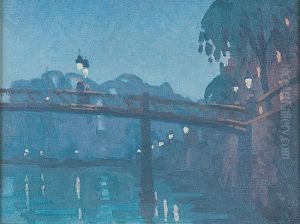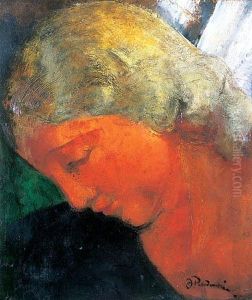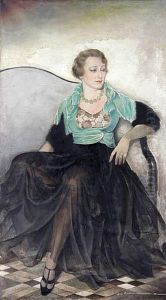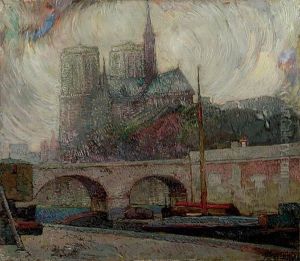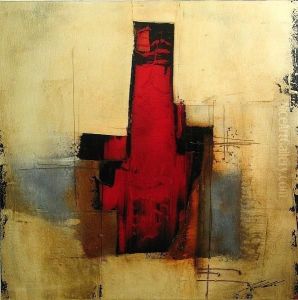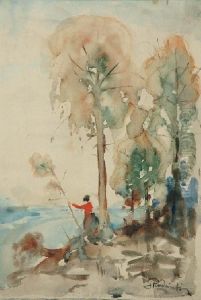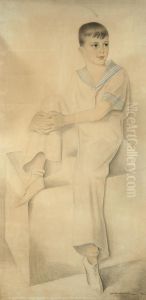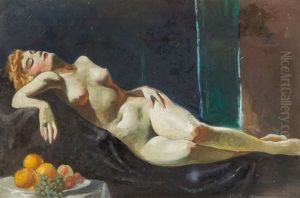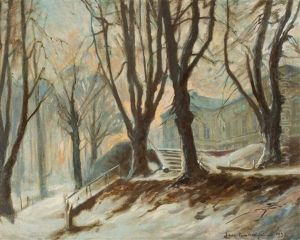Jan Rudnicki Paintings
Jan Rudnicki was a Polish painter, primarily known for his landscape and genre paintings. Born on June 24, 1881, in Warsaw, Poland, which at the time was part of the Russian Empire, he was active during a period that saw significant changes in the political and cultural landscape of his country.
Rudnicki studied at the School of Fine Arts in Warsaw under the guidance of notable artists such as Wojciech Gerson and Konrad Krzyżanowski. After completing his education, he continued to develop his artistic skills, focusing on capturing the picturesque scenes of Polish countryside and the daily lives of its people. His work was characterized by a realistic approach, attention to detail, and a sensitive use of color.
Throughout his career, Rudnicki participated in numerous exhibitions and was recognized for his contribution to Polish art. He was a part of the vibrant art scene in Warsaw and was associated with several art societies. His paintings were appreciated for their poetic interpretation of rural Poland, and he became one of the respected chroniclers of the nation's landscape and traditions through his art.
The interwar period was a time of significant achievements for Rudnicki. Poland had regained its independence after World War I, and there was a strong sense of national pride among artists and intellectuals. In this climate, Rudnicki's art resonated with the public and critics alike, as it reflected the beauty and spirit of the newly independent nation.
Despite the hardships brought on by the outbreak of World War II and the subsequent occupation of Poland, Rudnicki continued to paint, although his opportunities to exhibit were severely limited during this time. The war took a heavy toll on the Polish art community, and Rudnicki's work from this period often reflects the somber realities of life under occupation.
Jan Rudnicki passed away on November 10, 1948, in Warsaw. His legacy lives on through his paintings, which are held in various museum collections and continue to be appreciated for their portrayal of the Polish landscape and its people. Rudnicki's work remains an important part of Poland's cultural heritage and offers a window into the country's past.
